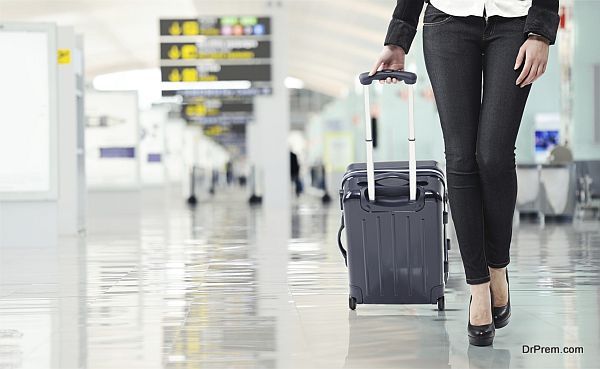Airports all over the world are realizing the importance of becoming eco-friendly. Airports are huge spaces and consume a lot of energy. In fact, the carbon footprint of those who occasionally air travel is significantly higher. But what can we do? Most of us travel by airplanes only because we have to, we can try to be as eco-friendly with it as possible, but sometimes that is not enough. Keeping this very problem in mind, governments from all around the world are coming up with eco-friendly airports. If with effort, they try to make air travel green, then that would surely make a huge difference.
By going green, they would be saving a lot of natural resources. Even some of the popular old airports are changing their design to include eco-friendly measures and many of the new constructions are in a manner which conforms to the latest sustainability standards. Here are some of the best eco-friendly airports in the world, which have made eco-friendliness their byword:
8 – Eco-friendly airports in the world
1. Vancouver International Airport, Canada
 Image Source : clevelandcityforge.com
Image Source : clevelandcityforge.com
This airport has North America’s largest living wall. It 60 ft high and on 2,173 panels has 28,249 plants. The wall has an in-built feeding and irrigation system. Vancouver airport’s stunning living wall is an inspiration to other airports as well as travellers. The hot water at this airport is heated by solar energy, which amounts to a huge amount of energy saving. It offers eco-friendly transport options for passengers in the form of natural gas and hybrid cars. This resulted in taking 1,651 fossil fuel cars off the road which reduced carbon dioxide emission by 9,248 tons every year. With these eco-friendly features, this airport qualifies to be one of the world’s most eco-friendly airports.
2. Boston’s Logan Terminal A
 Image Source : cache.boston.com
Image Source : cache.boston.com
This terminal was the first to be LEED certified in 2006. The airport’s environment-friendly initiatives include 20 wind turbines that offset 3% of energy needs for the building. Heat reflecting roofs, low flow faucets, and a runway which was constructed from eco-friendly asphalt makes this one of the best eco-friendly airports in the world.
3. Changi airport, Singapore
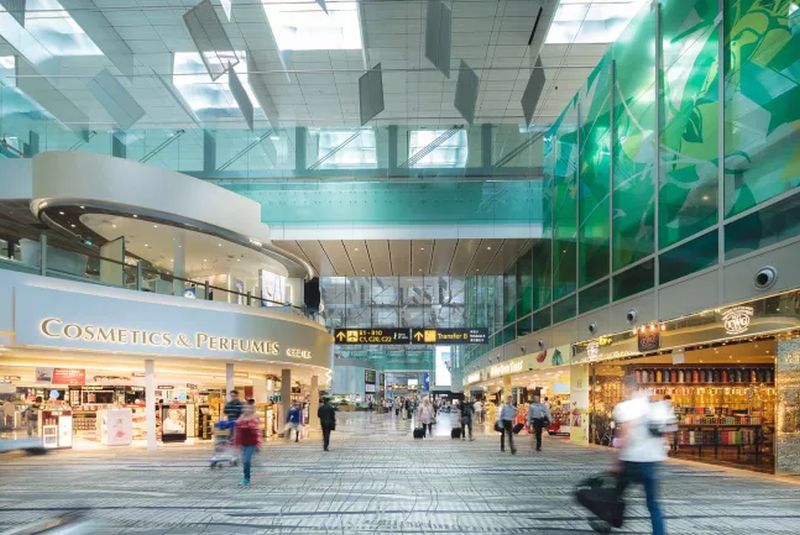 Image Source : resources.mynewsdesk.com
Image Source : resources.mynewsdesk.com
Changi airport’s intensive environment-friendly efforts put it in the race for the best eco-friendly airport in the world. It’s one of the most loved airports with its convenience and user-friendly interface. Its eco-friendliness too has impressed world travellers. With 919 skylights, the airport’s electricity consumption in the daytime is minimal. An in-house plant nursery supplies the airport with greenery and harvested rainwater is used to water the plants. An orchid garden, sunflower garden, cactus garden, butterfly garden, and water lily garden gives travellers the opportunity to while away the time waiting for their flights in a soothing, natural atmosphere.
4. Terminal 3 in Indira Gandhi International Airport
 Image Source : airport-technology.com
Image Source : airport-technology.com
This terminal has been awarded the coveted LEED-Gold certification. The airport is vast – spread over 5.4 million sq ft. It was constructed with recycled construction material and ambient light lights up the terminal, reducing energy use. Battery operated vehicles transport travellers between the different terminals. Water treatment and management programs conserve water efficiently. All these features make this one of the world’s most eco-friendly airports.
5. Galapagos Airport
Currently, this is the best eco-friendly airport in the world. It was built in the year 2012. It runs exclusively on wind and solar power. Furthermore, the airport on photovoltaic cells for electricity. These belong to the runways. The rest 65% is generated by the windmills which are located in the periphery of the airport. The airport has been constructed from 80% recycled materials too. All these eco-focused credentials make Galapagos Airport the most sustainable airport in the world.
6. Munich International, Germany
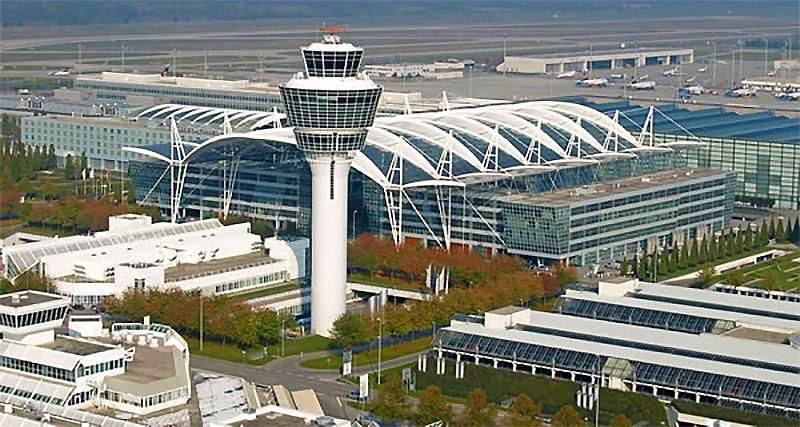 Image Source : momspumphere.com
Image Source : momspumphere.com
To reduce its carbon footprint, Munich International has eco-friendly lighting and ventilation systems in place. Its glass walls enhance the natural light and help to decrease the use of artificial light in the daytime.
7. Chicago’s O’Hare airport
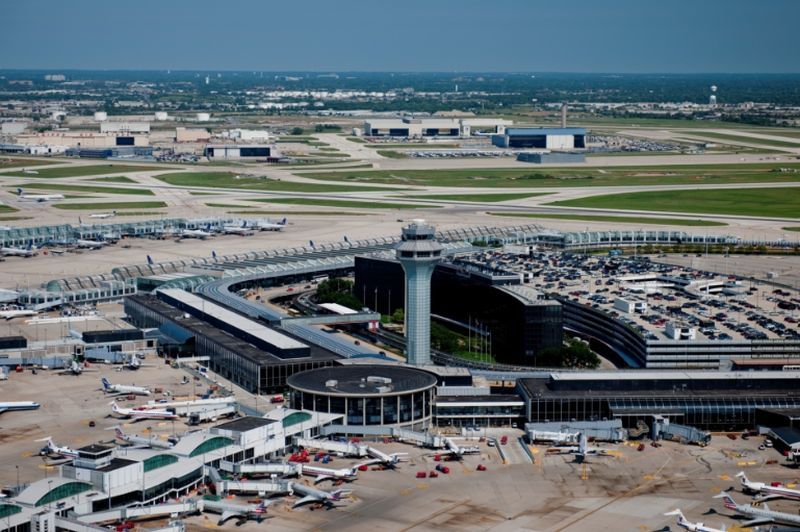 Image Source : chicagobusiness.com
Image Source : chicagobusiness.com
O’Hare airport in Chicago has installed an aeroponic garden on the mezzanine floor of its Rotunda building. The aeroponic garden is unique and produces basil, Swiss chard, dill, cilantro, chives, parsley, and other greens required for the airport. It also houses 1 million bees in its 75 beehives, which has made it the largest airport apiary in the world. It is thus one of the most eco-friendly airports in the world.
8. San Francisco International
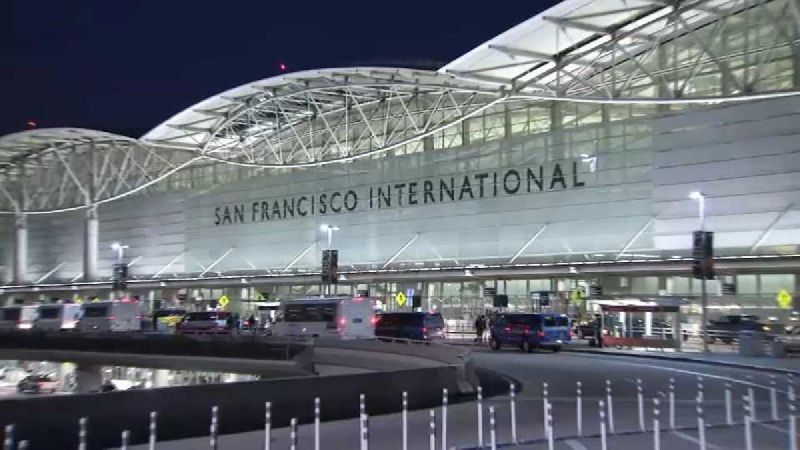 Image Source : media.nbcbayarea.com
Image Source : media.nbcbayarea.com
This airport is lit up with brilliant sunlight, giving a cheerful vibe to all its visitors. It’s the first airport in the United States to receive LEED Gold certification. The airport encourages its vendors to provide customers with organic and edible cutlery, reducing the use of disposables. Passengers can fill their water bottles so that they do not have to keep buying plastic bottles.
Eco-friendly airports in the world have proved that eco-friendly measures on a large scale can help to conserve valuable natural resources. These buildings are also an example for passengers to follow eco-friendly measures in their own lives.
Some more eco-friendly steps that the airline industry should take
1. Digitising tickets, itineraries, receipts
With the number of passengers growing every year, airlines have to printout thousands of tickets, boarding passes, itineraries, etc which is a wastage of paper. Airlines, as well as travel agents, can reduce the use of paper and work digitally, giving out SMSs instead. This would be a much more eco-friendly way of ticketing than the method used now.
2. Providing passengers with greener options
Airlines can inform passengers about greener options available to them while traveling to and from airports. Personalized message systems can inform passengers about traffic closures or eco-friendly transport options, including carpooling options. By notifying travelers about alternative transport options can prevent emissions due to congestion during their journey to the airport.
3. Use RFID tags
 By using RFID tags for baggage, paper wastage can be reduced. Paper tags are just thrown away after one use, but RFID tags can be used again at different points of the journey. This not only saves precious paper but is also a great way to reduce the number of lost baggage, as every passenger’s baggage can be tracked on a real-time basis.
By using RFID tags for baggage, paper wastage can be reduced. Paper tags are just thrown away after one use, but RFID tags can be used again at different points of the journey. This not only saves precious paper but is also a great way to reduce the number of lost baggage, as every passenger’s baggage can be tracked on a real-time basis.
4. Use apps to provide in-flight entertainment
Airlines can give the option of apps to passengers to read magazines and newspapers online on their own devices, rather than printed reading material.
5. Using biofuels instead of jet fuel
 Jetfuel is harmful to the environment, so the airline industry should focus and support the development of biofuels which can fuel aircraft in a sustainable manner.
Jetfuel is harmful to the environment, so the airline industry should focus and support the development of biofuels which can fuel aircraft in a sustainable manner.
What can you do to enjoy eco-friendly air travel?
Airlines and passengers have to work hand in hand to ensure an eco-friendly travel experience. So what can you, as a passenger, do to reduce the carbon footprint associated with air travel?
1. Opt for non-stop flights
 Booking non-stop flights may cost a little bit more, but you’d be doing the environment a good turn, as these flights use a lesser quantity of fuel.
Booking non-stop flights may cost a little bit more, but you’d be doing the environment a good turn, as these flights use a lesser quantity of fuel.
2. Use the latest materials and design to construct greener aircraft
Aircraft manufacturers can use the latest, lightweight but effective materials to construct airplanes which will lead to lower fuel use, thus conserving a huge amount of fossil fuel.
Aerodynamic improvements will enable planes to increase fuel efficiency and reduce drag, leading to more energy-efficient aircraft. Including pneumatic systems instead of electric systems will conserve electricity. Manufacturers should also adhere to international environmental standards while building aircraft. Choosing to recycle airplanes can reduce up to 95% energy, when manufacturers recycle carbon fiber, rather than making new virgin fiber.
3. Fly on new planes
 If you can choose between an old or a new plane which is more fuel-efficient, book the new plane. Boeing 787 Dreamliner and Airbus A350 are green choices for long haul flights.
If you can choose between an old or a new plane which is more fuel-efficient, book the new plane. Boeing 787 Dreamliner and Airbus A350 are green choices for long haul flights.
4. Do lower window shades
There is a very good scientific, eco-friendly reason why flight attendants ask you to keep the shades closed when it’s hot outside. This simple thing keeps the plane cool, and if all passengers do this, the plane would become at least 10 degrees colder. The reduction in the cooling load saves energy and also reduces emissions.
5. Pack light
Airlines are reducing the baggage load by restricting the amount of luggage each passenger can carry. Even though you may hate these low-weight restrictions, especially when you’re on vacation and want to buy all kinds of things. But a lighter load makes aircraft more fuel-efficient, thus reducing the use of fossil fuel.
Improving fleet efficiency, implementing aircraft modifications such as winglets, developing operational efficiency and optimizing navigation and efficiency worldwide are some other measure which the airline industry can take, in order to benefit the environment.




